Ghostrunner Review – Xbox Series X|S
Fast Facts
Ghostrunner
Developer: One More Level
Publisher: 505 Games & All in! Games
Website: https://ghostrunnergame.com/
Genre(s): Action, Platformer
Platform: Xbox Series X (Xbox Series S, Xbox One, PS4, PS5, Nintendo Switch, Steam)
Age Rating: PEGI 18
Release Date: 28/09/2021 (update – original release 27/10/2020)
Price: £24.99
A code was provided for review purposes
*Michael Scott Voice* PARKOUR!
Ghostrunner originally launched a year ago on last-generation consoles and had a lot of buzz surrounding its fast-paced parkour platforming, stylish action, and the one-two punch of its cyberpunk aesthetic and banger-filled soundtrack. An enhanced version was then released at the end of September for the Xbox Series X|S and PlayStation 5, allowing for up to 120 frames-per-second in 4K, 3D audio, raytracing, and near-instant load times. Going from the start menu to loading on my recent save took just 4 seconds!
In Ghostrunner, you play as the titular character who survives a would-be fatal fall to the bottom of Dharma Tower. It’s a first-person, fast-as-hell platformer that’ll see you wall-running, climbing, grappling, hooking, and slicing your way through enemies as you climb your way back to the top in one big revenge mission.
This is a challenging game that knows full well that you’re going to die. And you will – a lot. You’ll gradually unlock additional skills and be thoroughly tested on your ability to perform some absolutely bonkers platforming segments, while simultaneously planning on-the-fly attacks as you avoid one-hit kills coming from all directions.
I can’t stress enough just how fast and fluid Ghostrunner is. It’s a game that feels like it’s meant to be played with your foot slammed on the gas, which definitely took some getting used to. At full speed, I initially found it a bit cumbersome executing quick turns, dashes, and attacks using a controller, but after about two hundred deaths (basically three levels in) everything started to click and I noticed consistent improvements moving forward.
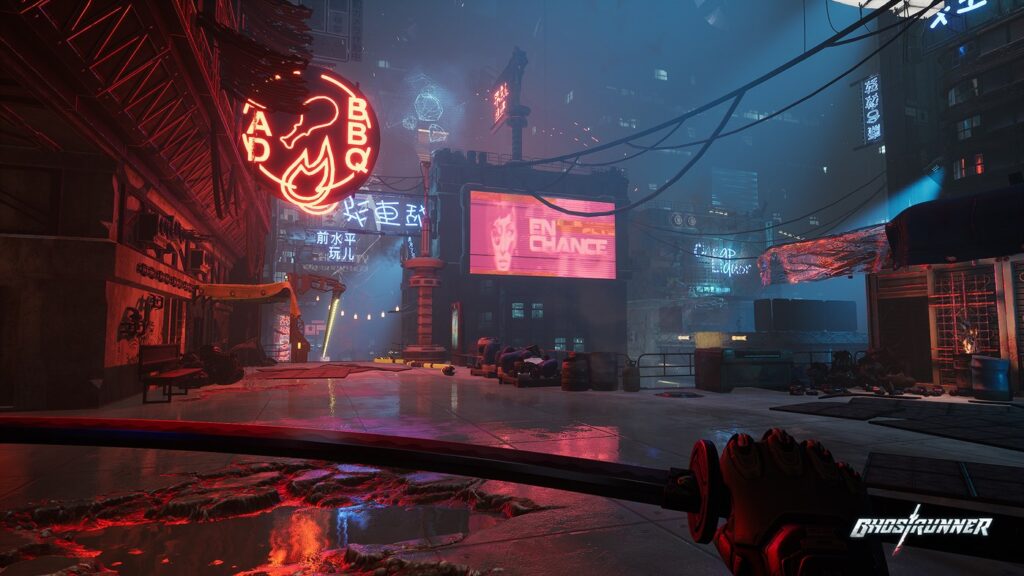
More than Just a Stylish Speedrun
While the gameplay of Ghostrunner is clearly front and center, being the most important aspect of any action game, there’s more to take in than just aiming for “the perfect run.” There’s actually an interesting narrative in there about evil corporations, classism, and the usual cyberpunk trimmings, although I’m not the biggest fan as to how it was delivered.
You don’t really have a lot of breathing room in this game and most of the dialogue occurs over a radio while white-knuckling the controller within a parkour playground. The moment I’d take my eyes off of the action and redirected them down to the subtitles, chances were that I’d die and be sent back to the previous checkpoint.
I’m not sure how the developer could go about improving this, though. Longer, more drawn-out cutscenes would absolutely batter the momentum while less story overall isn’t the best approach either.
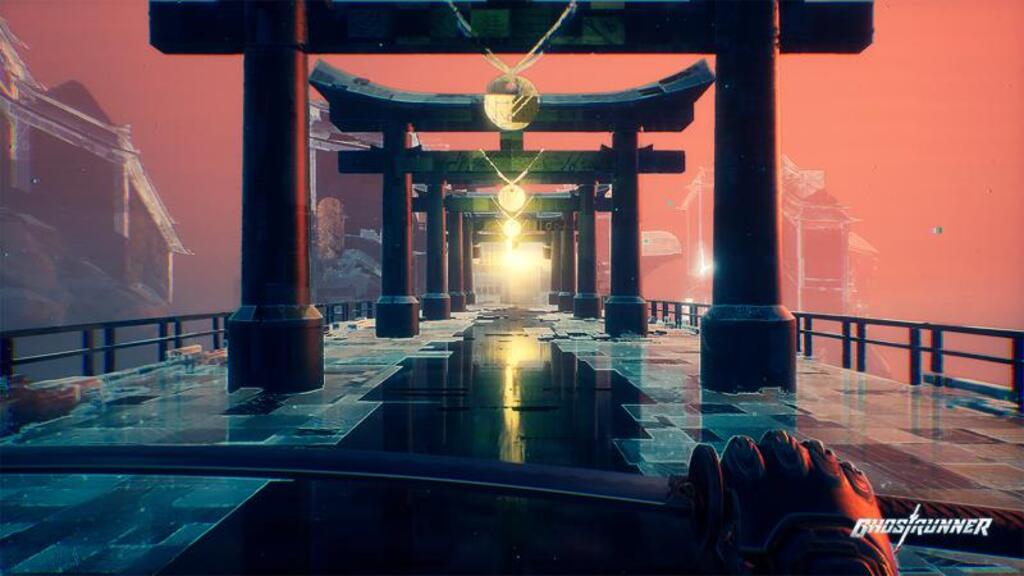
Tricks of the Trade
Making your way through Ghostrunner’s thirteen stages slowly unlocks new abilities that add to the game’s overall complexity and also feel really good to use. There’s a dashing “blink” attack that can zoom through projectiles and slice through three enemies at once, a timed-use shuriken that can take down enemies and trigger switches (often in mid-air!), and the always enjoyable bullet reflection.
It wasn’t uncommon for stages to require me to leap off platforms into a wall, run, fire off my grappling hook onto various ledges, disable locking mechanisms with the shuriken, and dash through laser walls, all within 15 seconds. That doesn’t even account for all of the enemies that are always eager to riddle you with bullets.
There’s also an upgrade system that improves certain abilities like faster recharges and a wider blink radius, which can be allotted in a neat Tetris-meets-Resident Evil 4 inventory mechanic. Every upgrade looks like a Tetris shape and you can apply as many as you can fit inside of the grid-based memory chip. Less impactful upgrades like highlighting collectibles on the mini-map may only take up a 4×4 square, but if you want to deflect bullets or have an additional charge on your dash ability, you’ll have to work around far more complex shapes.
Personally, I liked this a lot. There’s a good variety of upgrades to choose from and sometimes all it took to make it through a section I was struggling with, was to switch things around. Being able to (non-lethally) deflect a bullet with a well-timed sword swing, over having the tactical advantage of viewing enemy outlines through walls, prevented another death quite often.
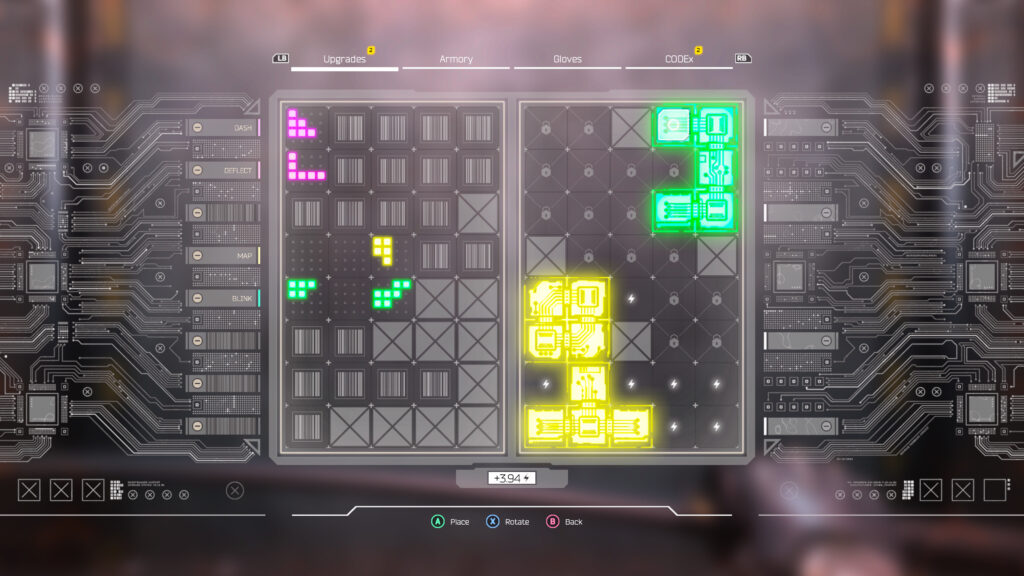
Ghostrunning Is Very, Very Hard Work
I know I’ve mentioned this a few times already, but Ghostrunner is very difficult. In my personal opinion, it’s one of the most challenging games I’ve played in a long, long time. There were moments in my playthrough where I honestly thought I’d hit my skill ceiling and would never progress further.
It’s a rewarding challenge, though. The feel of finally nailing every platforming element and systematically dispatching a bunch of baddies made me feel like a god. I’m not the biggest fan of “difficulty as a selling point” games, but I respect their appeal and they clearly have an audience. Needless to say, I wasn’t too keen on Ghostrunner when I first started playing it.
I’d estimate that I died more than 80 times within the first two stages and well over 300 overall, but it always felt rewarding when I’d cross the finish line and head into the next level. If redoing the same stages over and over while learning from your mistakes sounds unappealing, but the rest of the game sounds neat, then just take into consideration that I also don’t enjoy those kinds of experiences. And I still very much enjoyed Ghostrunner.
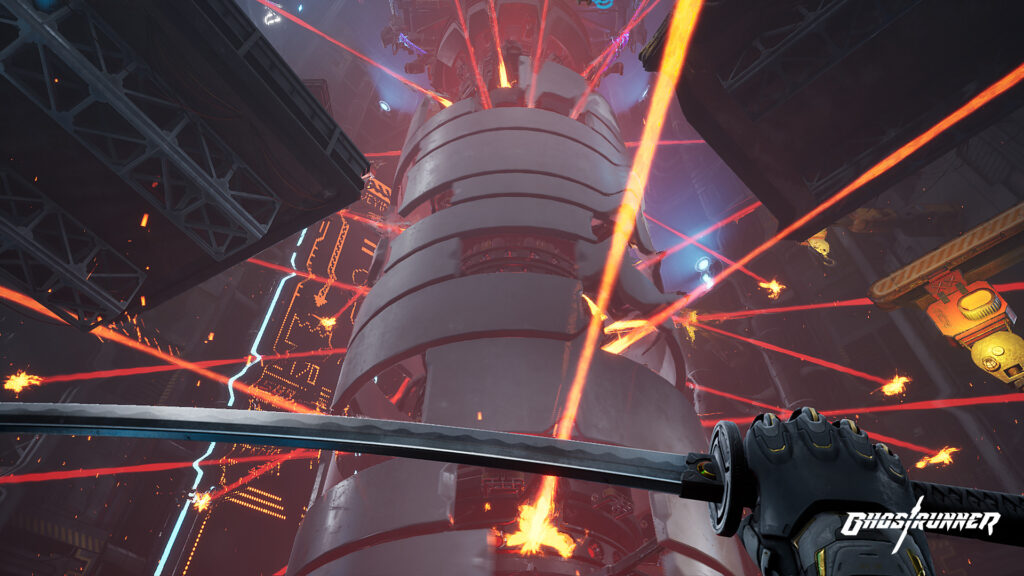
To Run or To Walk
If you find yourself struggling, Ghostrunner offers a few assist mode options to help soften the blow (along with a very generous checkpoint system). I initially thought the speed of the game was way too fast, so I bumped it down a little and eventually made it through some of the more challenging areas that were holding me back.
Aside from slowing down the default blistering speed, you can choose to take an additional hit of damage and reduce the recharge rate of your time slowing ability. I went through as much of the game as my skill ceiling allowed with the default settings, but activating some of the assist mode options let me overcome some hurdles that I just didn’t see myself conquering otherwise.
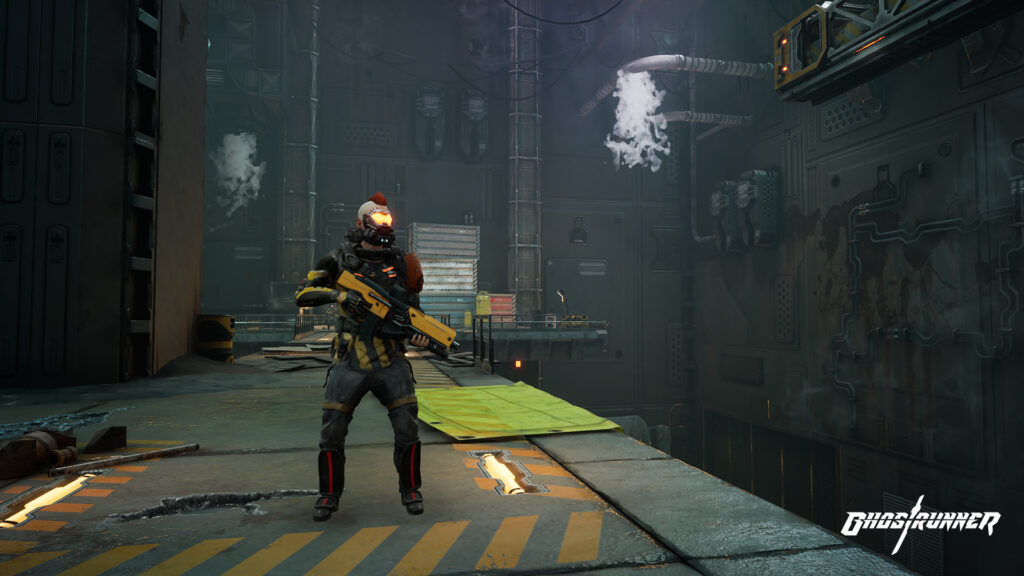
A Worthy Current-Generation Console Upgrade?
I can’t speak to the last-generation console versions of Ghostrunner, but it ran buttery smooth at 4K resolution with raytracing turned on and the performance mode bumping the frame rate up to an eye-watering 120 FPS was crazy to watch play out.
The visuals are beautifully drenched in dingy darks and vibrant neons, from cityscapes to floating Japanese villages. Equally wonderful is the pulse-pounding soundtrack that was often so good that I’d set my controller down and zone out to if I was in dire need of a break. I’ve also found myself listening to it away from gaming, like while making dinner or walking my dog. It’s extraordinary.
If challenging games are in your wheelhouse, especially the speedrunning types, then Ghostrunner should be on your radar. Or, if you’re like me and usually steer clear of these experiences, you may still find something to enjoy here by using the assist mode toggles.
Ghostrunner is a game that I couldn’t stop thinking about when I wasn’t playing it. That’s basically the review summed up in one sentence. It’s a hell of a game to put your shiny new gaming box through its paces if you’re up to the challenge, though.
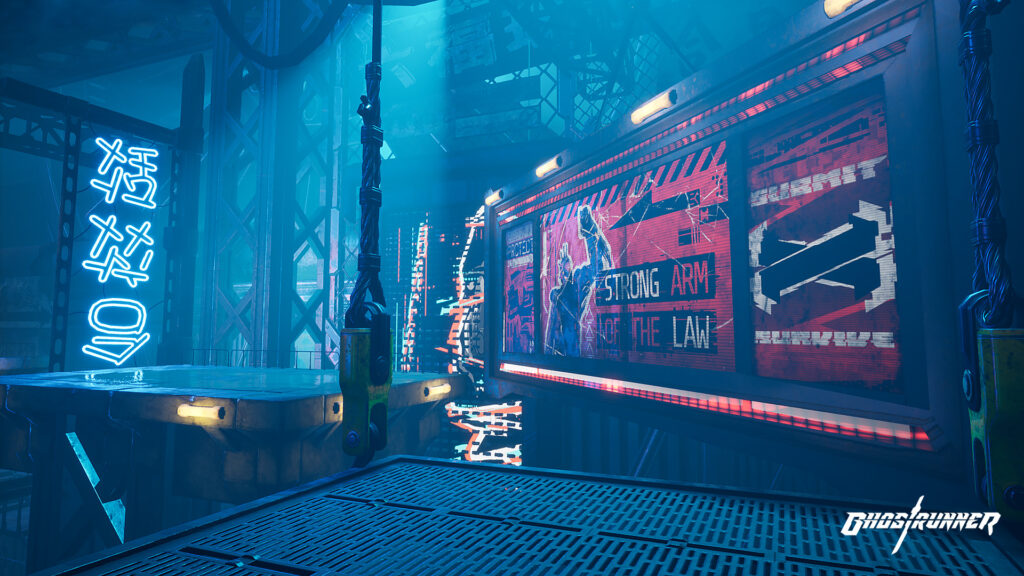
Rapid Reviews Rating

4 out of 5
4
You can purchase Ghostrunner from the Xbox Store.

You can find and read our reviews on OpenCritic.





